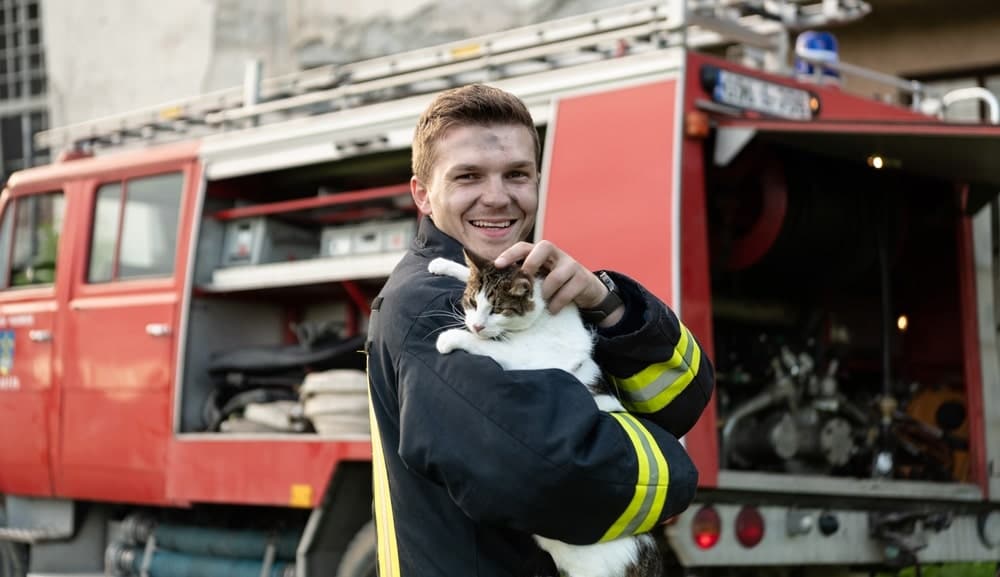In times of emergencies, knowing how to perform animal CPR can be the difference between life and loss. Our furry companions are more than pets; they are beloved family members. So, we’ve put together this guide to help you be prepared for any unforeseen circumstances. Let’s dive into the world of animal CPR and learn how to be a superhero for your furry friends!
Understanding Animal CPR
Animal CPR, or cardiopulmonary resuscitation, is a life-saving technique aimed at reviving a pet in cardiac arrest. Unlike human CPR, which involves chest compressions and rescue breaths, animal CPR primarily focuses on chest compressions to maintain blood circulation.
Recognizing distress or cardiac arrest in animals is crucial. Keep an eye out for signs like sudden collapse, loss of consciousness, difficulty breathing, or an absent pulse. Immediate action can make all the difference in saving your pet’s life.
Preparing for Animal CPR
Creating a pet first aid kit is a vital step in being prepared for any emergency. Gather essential supplies such as sterile gauze, adhesive bandages, hydrogen peroxide, scissors, tweezers, and a pet thermometer. Make sure to keep your first aid kit in a convenient and easily accessible location in your home. Additionally, don’t forget to include an emergency contact list with your veterinarian’s details, as well as any important medical records for your pet.
Familiarizing yourself with CPR techniques is equally crucial. Attend workshops or take online courses to learn from experts and gain hands-on experience. Practice the steps and techniques regularly, so you’re confident and ready to act swiftly in an emergency. Being knowledgeable about animal CPR can instill a sense of empowerment, ensuring you are well-prepared to help your furry companion when they need you most.
In the face of an emergency, it’s natural to feel overwhelmed, but it’s essential to stay calm and assess the situation rationally. Take a deep breath, clear your mind, and remember the steps you’ve learned. Panic can impede your ability to think clearly and act promptly. Your pet relies on your strength and composure, so be the calming presence they need during those critical moments. Assess the situation carefully, identify any potential risks, and prioritize your actions based on the severity of the situation. By staying calm, you can make better decisions and provide the best possible care for your beloved companion.
Performing Animal CPR
Each animal requires slightly different CPR techniques. According to the American Red Cross, there are six crucial steps to perform CPR on dogs and cats.1 Here is the step-by-step guide:
For Dogs:
- Check for a pulse: Place two fingers on the inner thigh, near the base of the tail, to feel for a heartbeat.
- Start chest compressions:
- To perform CPR on small dogs, place your hands directly over their heart.
- To perform CPR on a deep-chested dog, place the heel of one hand on the widest part of the chest and place your other hand on top.
- To perform CPR on a barrel-chested dog, place it on its back, place one hand over the widest part of the chest, place the other hand directly over the first, and lock your elbows.
- Compress one-third to one-half its width at a rate of 100-120 compressions per minute. Perform 30 chest compressions.
- Administer artificial respiration: Close your dog’s mouth, extend their neck, and cover their nose with your mouth, blowing gently until you see the chest rise. Perform a second rescue breath and repeat 30 chest compressions, followed by two more breaths.
- Check for breathing every 2 minutes during the process. Seek immediate professional help.
For Cats:
- Check for a pulse: Place two fingers on the cat’s chest, just behind their front leg, to feel for a heartbeat.
- Start chest compressions: Place the heel of one of your hands on the center of the chest, and then place your other hand on top of the first. Compress it one-third to one-half its width, waiting for the chest to recoil.
- Compress at a rate of 100-120 compressions per minute, performing 30 chest compressions.
- Administer artificial respiration: Place your mouth over the cat’s nose, and blow gently until you see the chest rise. Perform a second rescue breath and repeat 30 chest compressions, followed by two more breaths.
- Check for breathing every 2 minutes during the process. Seek immediate professional help.
Common Emergency Scenarios
Drowning incidents require immediate action. After removing the pet from the water, perform CPR if necessary. For dogs, keep their head and neck aligned with their back and perform compressions. For cats, ensure their neck is extended before beginning compressions.
Choking situations can be distressing. If your pet is choking, try to remove the object if it’s visible and accessible. If not, perform the Heimlich maneuver with gentle abdominal thrusts, being cautious not to harm the animal.
Symptoms of poisoning can vary, but immediate action is crucial. If your pet shows signs of poisoning, perform CPR if necessary and rush them to the veterinarian immediately. Always bring the substance’s packaging for proper identification.
Seeking Professional Help
Remember, even if you successfully perform CPR, it’s essential to contact a veterinarian immediately. Professional evaluation and follow-up care are critical for your pet’s well-being. If possible, enlist the help of a friend or family member to drive while you focus on your pet’s comfort during transportation.
Prevention and Preparedness
Prevention is better than cure. Minimize the risk of emergencies by pet-proofing your home and yard. Keep hazardous substances out of reach, secure trash cans, and avoid leaving small objects lying around.
Promote your pet’s safety by using proper leashes and restraints during walks and car rides. Keep their vaccinations up to date and ensure regular vet check-ups.
Lastly, invest in pet CPR and first aid training. Being equipped with the knowledge and skills to handle emergencies empowers you to be the best pet parent you can be.
Be Prepared with Papaya Vet
Being prepared for emergencies is crucial in safeguarding the lives of our beloved four-legged companions. By understanding animal CPR, creating a pet first aid kit, and staying calm in critical situations, you can become your pet’s superhero. Remember, prevention is key, but in those rare moments when emergencies strike, your knowledge and quick action can make all the difference. With Papaya Veterinary Care, we put your pet’s health first. Our experienced vets provide emergency and urgent care for all pet emergencies, from life-threatening conditions to minor injuries.
Sources:
- “Red Cross Training & Certification, and Store.” Red Cross, 2021, https://www.redcross.org/take-a-class/cpr/performing-cpr/pet-cpr. Accessed 4 Aug. 2023.


